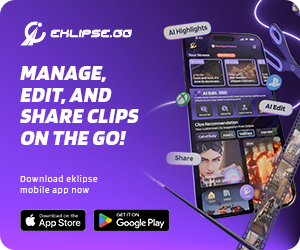
Level Up Your Marvel Rivals Gameplay
Capture your epic wins, clutch moments, and even hilarious fails with Eklipse. Easily create and share highlight reels with your friends—even if you're not streaming!
Learn MoreStruggling with poor audio on your streams? You’re not alone! Many streamers assume quality sound requires a pricey microphone. However, there are plenty of budget friendly audio solutions that can significantly improve your audio without overspending. You don’t have to spend a fortune to sound professional.
Great audio is just as important as visuals in streaming, but it doesn’t have to come with a high price tag. There are several affordable microphones and setups that offer excellent performance for any streamer. We’ll explore five cost-effective audio solutions, outlining the pros and cons to help you choose the best option for your needs.

1. USB Microphones: Simple and Effective

USB microphones are a great entry-point for streamers, offering a simple, plug-and-play experience. I’ve found them incredibly easy to set up; they connect directly to your computer via USB, making them a no-fuss option for beginners.
- Pros: They are simple to set up and use, and offer good sound quality for the price. They are also widely available and easy to find.
- Cons: They tend to pick up more background noise than dynamic microphones, which can be an issue in less-than-ideal streaming environments.
- Examples: The Blue Snowball is great for those just starting out, the Samson Q2U is very versatile with both USB and XLR options, and the HyperX SoloCast is a good compact option for gamers.
2. Headset Microphones: Convenient All-in-One
Headset microphones are a convenient option for gamers, combining both audio input and output. I’ve used headset mics for gaming, and they are incredibly convenient for chat and gaming audio.
- Pros: They are very convenient, and are very cost effective since the microphone is already bundled into the headset.
- Cons: The sound quality is generally lower than dedicated microphones, and the mic might pick up keyboard and mouse clicks.
- Examples: Logitech G Series, HyperX Cloud Series, and Razer BlackShark Series headsets all provide a wide range of options at different price points.
3. Lavalier Microphones: Discreet and Portable
Lavalier mics are small, clip-on microphones that attach to clothing. These are fantastic for situations where you want a low-profile setup that reduces background noise, and offers good portability.
- Pros: They are very discreet, minimize background noise, and are very portable, making them a good choice for people who stream on the go, or for situations where you don’t want a microphone taking up desk space.
- Cons: They can be sensitive to clothing rubbing and may require an adapter to connect to a computer.
- Examples: The Rode SmartLav+ offers good sound quality, and the Boya BY-M1 is very affordable.
4. Dynamic Microphones: Great for Noisy Environments
Dynamic microphones are great for streamers in noisy environments. These mics are very robust, and they excel at rejecting background noise. During testing, I found that these mics provide much better isolation than their condenser counterparts.
- Pros: They are great at rejecting background noise, making them a good choice for noisy environments.
- Cons: They can sound less detailed than condenser microphones, and often require an audio interface to connect to a computer.
- Examples: The Samson Q2U is a great, versatile option with both USB and XLR connections, and the Audio-Technica ATR2100x offers great sound quality at a budget-friendly price.
5. Audio Interfaces and Mixers with a Cheap Microphone: Flexibility and Control
Using an audio interface or mixer with a budget microphone might sound intimidating at first, but it is a great way to improve your sound quality and overall flexibility. I’ve found these setups to be more complex than plug-and-play options, but they provide a lot more control over the audio output.
- Pros: They provide more control over audio settings, more inputs and outputs, and generally better sound quality with more flexibility.
- Cons: They have a more complex setup than a USB microphone, require some audio knowledge, and you’ll need to purchase both the interface and the microphone.
- Examples: A Focusrite Scarlett Solo paired with an inexpensive XLR microphone like a Behringer XM8500 provides a lot of flexibility and control without breaking the bank.
Final Thoughts
Upgrading your stream’s audio doesn’t have to be costly. With budget friendly audio solutions, streamers can boost sound quality affordably. From USB microphones to headset mics, lavaliers, dynamic mics, and audio interfaces, each offers unique benefits for improving your stream’s sound.
Experiment with different mics and consider adding accessories like a boom arm, pop filter, or acoustic treatment. These simple upgrades can enhance your audio without requiring a large investment.
🎮 Play. Clip. Share.
You don’t need to be a streamer to create amazing gaming clips.
Let Eklipse AI auto-detect your best moments and turn them into epic highlights!
Limited free clips available. Don't miss out!
